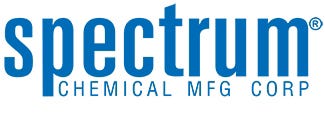Analtech® Glass-Backed Silica G UNIPLATES®
These plates are the most widely used silica gel TLC plates. No organic substances are added to these products, thus making them compatible with sulfuric acid charring visualization.
These plates are commonly scraped from the glass backing to isolate separated components for other analytical procedures. They are compatible with all organic solvents, however, they are not recommended for use in systems containing greater than 20% water because of the solubility of the gypsum binder in aqueous solutions. (For water tolerance see the GHL & GHLF series of plates).
The "G"stands for Gypsum and indicates that calcium sulfate hemihydrate (CaSO4•1/2H2), a refined form of gypsum, has been included in the adsorbent
formulation. Gypsum functions as a binder, improving the cohesion of the adsorbent particles and increasing the adhesion of the layer to the glass substrate.
The silica gel used in these plates is proprietary.
10 µm average particle size, 60A pore size.
Image(s) are representative of the product group and not necessarily the individual product.
Read More
These plates are commonly scraped from the glass backing to isolate separated components for other analytical procedures. They are compatible with all organic solvents, however, they are not recommended for use in systems containing greater than 20% water because of the solubility of the gypsum binder in aqueous solutions. (For water tolerance see the GHL & GHLF series of plates).
The "G"stands for Gypsum and indicates that calcium sulfate hemihydrate (CaSO4•1/2H2), a refined form of gypsum, has been included in the adsorbent
formulation. Gypsum functions as a binder, improving the cohesion of the adsorbent particles and increasing the adhesion of the layer to the glass substrate.
The silica gel used in these plates is proprietary.
10 µm average particle size, 60A pore size.
Image(s) are representative of the product group and not necessarily the individual product.
These plates are the most widely used silica gel TLC plates. No organic substances are added to these products, thus making them compatible with sulfuric acid charring visualization.
These plates are commonly scraped from the glass backing to isolate separated components for other analytical procedures. They are compatible with all organic solvents, however, they are not recommended for use in systems containing greater than 20% water because of the solubility of the gypsum binder in aqueous solutions. (For water tolerance see the GHL & GHLF series of plates).
The "G"stands for Gypsum and indicates that calcium sulfate hemihydrate (CaSO4•1/2H2), a refined form of gypsum, has been included in the adsorbent
formulation. Gypsum functions as a binder, improving the cohesion of the adsorbent particles and increasing the adhesion of the layer to the glass substrate.
The silica gel used in these plates is proprietary.
10 µm average particle size, 60A pore size.
Image(s) are representative of the product group and not necessarily the individual product.
These plates are commonly scraped from the glass backing to isolate separated components for other analytical procedures. They are compatible with all organic solvents, however, they are not recommended for use in systems containing greater than 20% water because of the solubility of the gypsum binder in aqueous solutions. (For water tolerance see the GHL & GHLF series of plates).
The "G"stands for Gypsum and indicates that calcium sulfate hemihydrate (CaSO4•1/2H2), a refined form of gypsum, has been included in the adsorbent
formulation. Gypsum functions as a binder, improving the cohesion of the adsorbent particles and increasing the adhesion of the layer to the glass substrate.
The silica gel used in these plates is proprietary.
10 µm average particle size, 60A pore size.
Image(s) are representative of the product group and not necessarily the individual product.
Certificates of Analysis
This service is currently unavailable!





